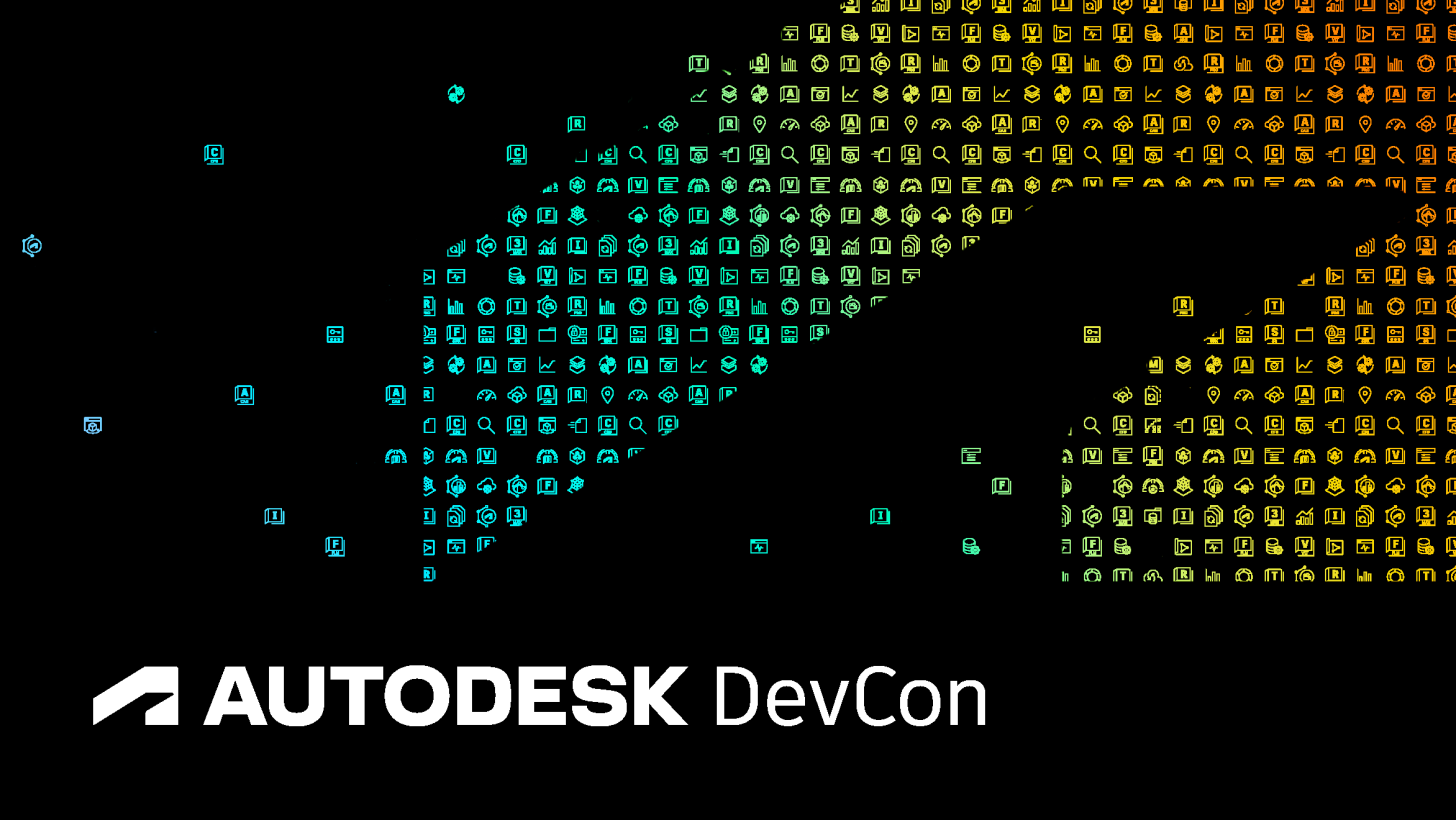
Attending events is getting back in swing these days. The lesson learned from COVID days – you go to conferences to talk to people. You can watch slides and presentations online. But to have the ability to talk to people, ask questions, to discuss and just have time to exchange thoughts with attendees is extremely important. Autodesk DevCon is one of these events. I attended DevCon 2023 in San Francisco and this year event in Boston was a great opportunity.
Earlier this week, I attended Autodesk DevCon 2024 in Boston. If you’re in Europe, you still have a chance to get to Autodesk Dev Con 2024 in Munich during the last week of May. The event was attended by Autodesk partners, engineers and developers focuses on engineering, manufacturing and construction software, working in manufacturing industry and construction firms.
Because of MFG & AEC mix in Autodesk customers, it is always interesting to see a wider range of people and companies from both industries. And as we can see construction companies these days more focusing on manufacturing principles, it is even more interesting (reminded me my old articlePLM vs BIM: common or different?). But this is a topic for another blog.
At the event, I was talking about OpenBOM experience of integrating with Autodesk CAD, PDM and PLM products. But the main focus of my presentation was about how OpenBOM is integrating with Autodesk Platform Services (formerly known as Autodesk Forge Platform). You can check more information about my presentation and my slides here – OpenBOM at Autodesk DevCon 2024 Boston.
In my article today, I want to share more what I learned about Autodesk platform strategy for data management and also share my thoughts about how it will impact Autodesk PLM development and strategy.
Autodesk, Data, Platform, API
One of the most frequent words you can hear at Autodesk event these days is data. The data is a focus on what Autodesk position. It is all about data and how to get value from data. And the data is also a problem, because as you can see from the numbers below, we product data in a large quantities, but it is unused and everyone wants to drive a better decision from data. So, the pain is clearly here.

Therefore, Autodesk position themselves with a strong attention to data model, data platforms, APIs and tools that can be used to get access to data, and help to make decisions using data through visualization, analysis, machine learning, artificial intelligence, and other methods.
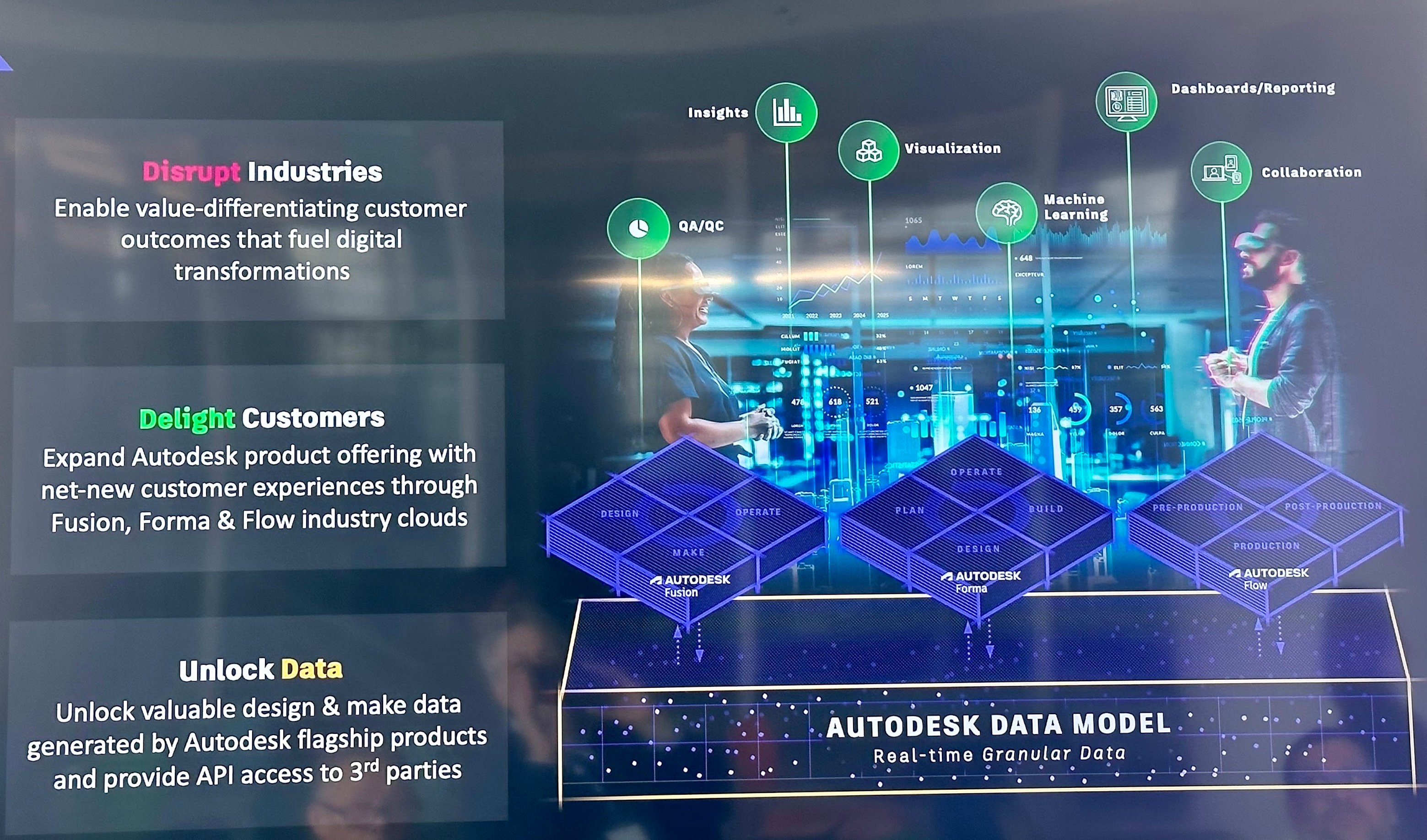
At the core of Autodesk strategy is Autodesk Platform Services that allows to connect, organize and streamline processes for three verticals of Autodesk Software – Manufacturing, Design and Product Lifecycle Management (Autodesk Fusion), AEC and Construction software (Autodesk Forma), and Media and Entertainment software (Flow).
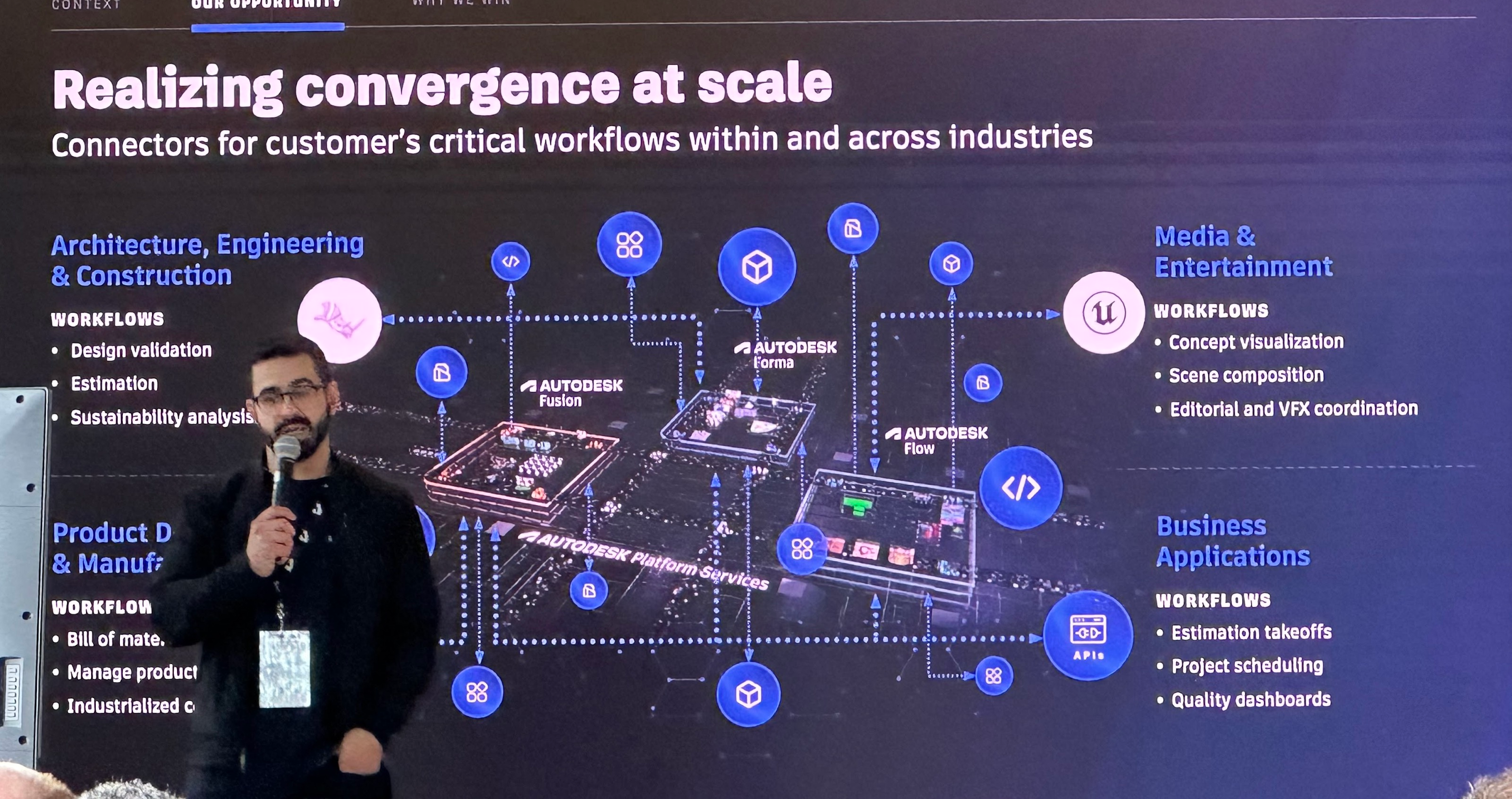
At the core of Autodesk Platform Services is API strategy that makes data available and allows to build applications to connect and make business cases around them. The following three slides can give you an idea how it can help to build more robust and scalable applications.
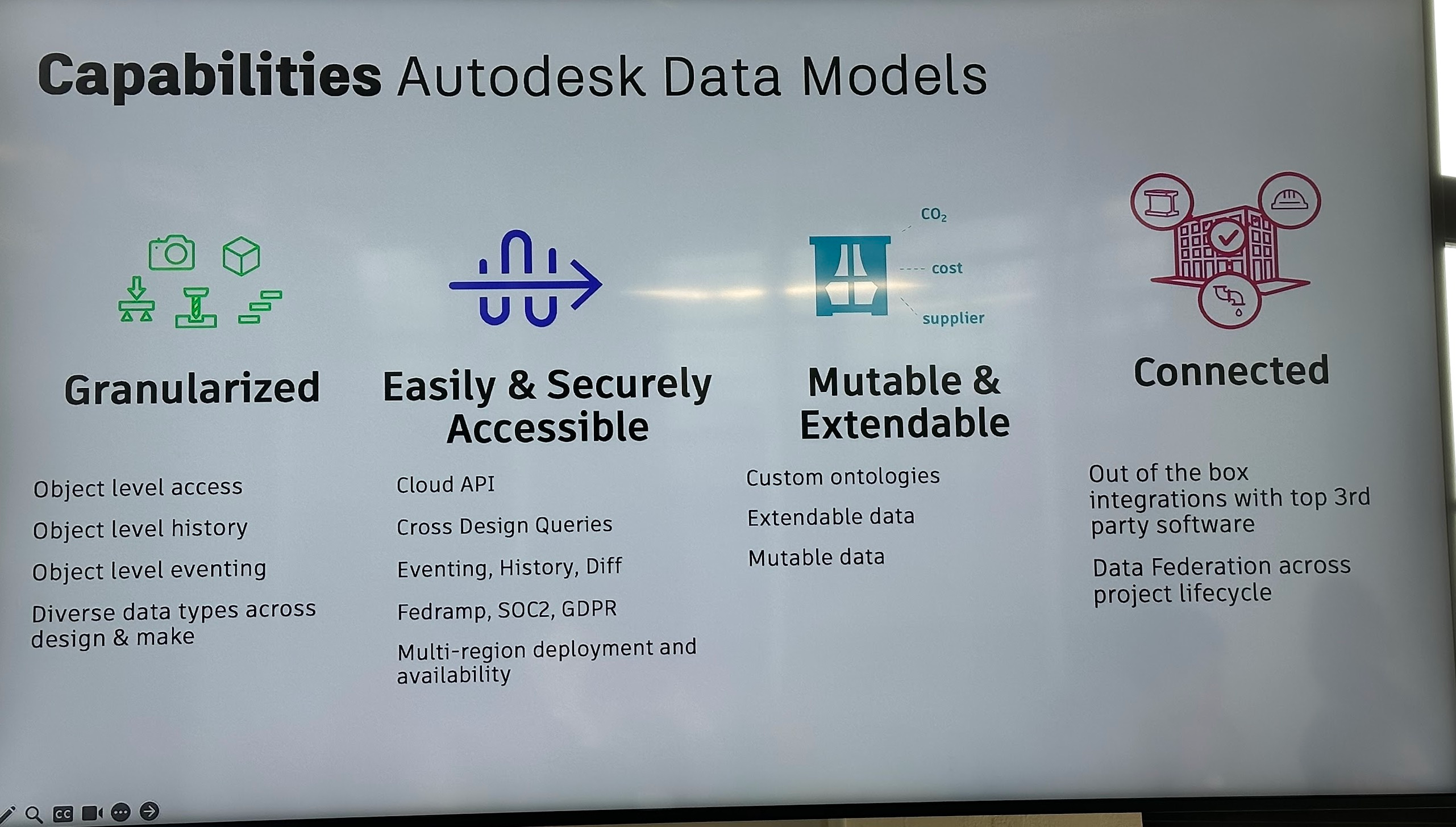
The most important part of Autodesk Platform Strategy is enable digital workflows and building an open ecosystem for granular data data across boundaries. This strategy has a strong connection to the trend I was talking about before – move from document to data.
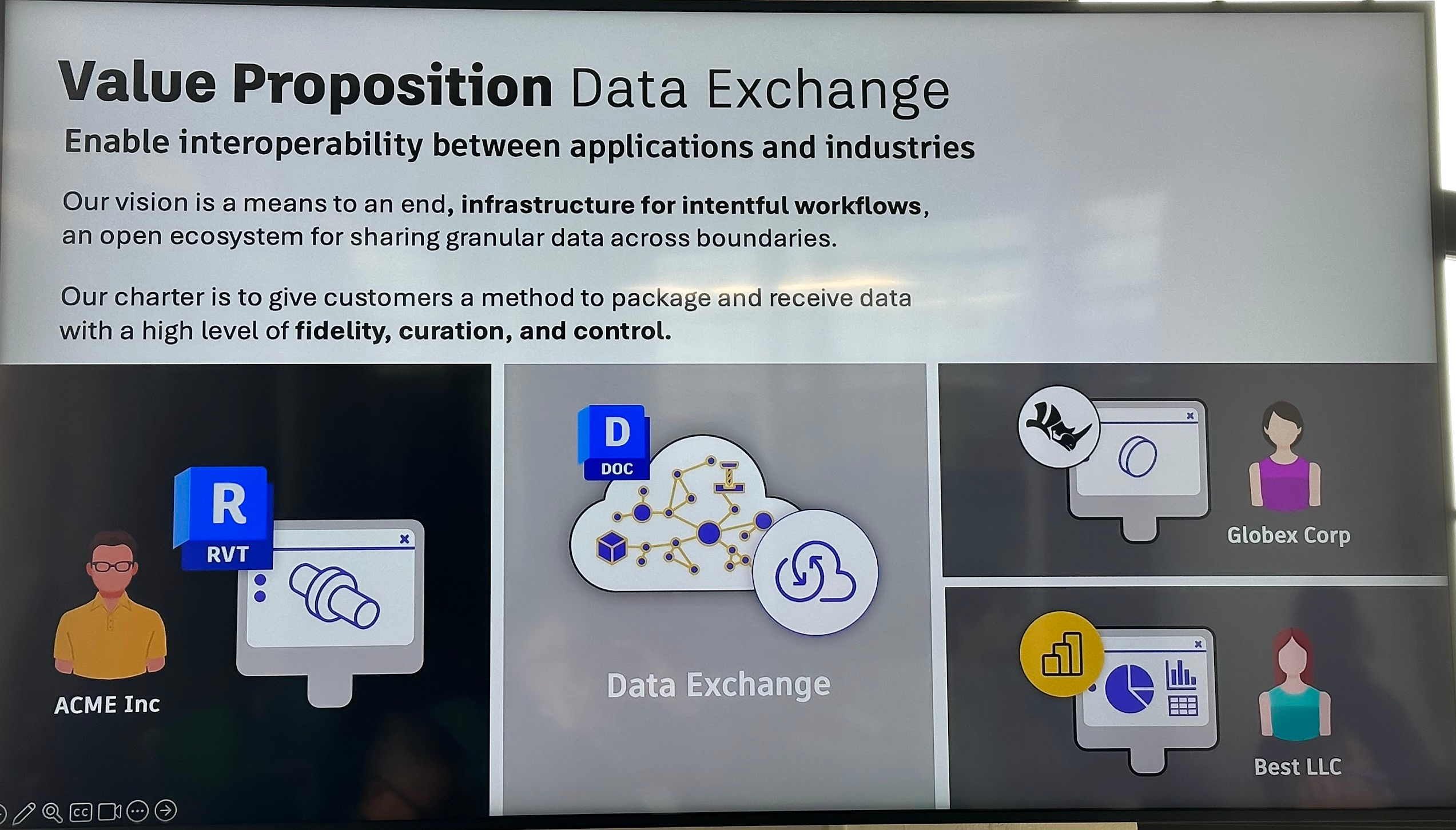
Autodesk makes data transparent, available to multiple applications, track history and provide the ability to visualize it in different forms and views.
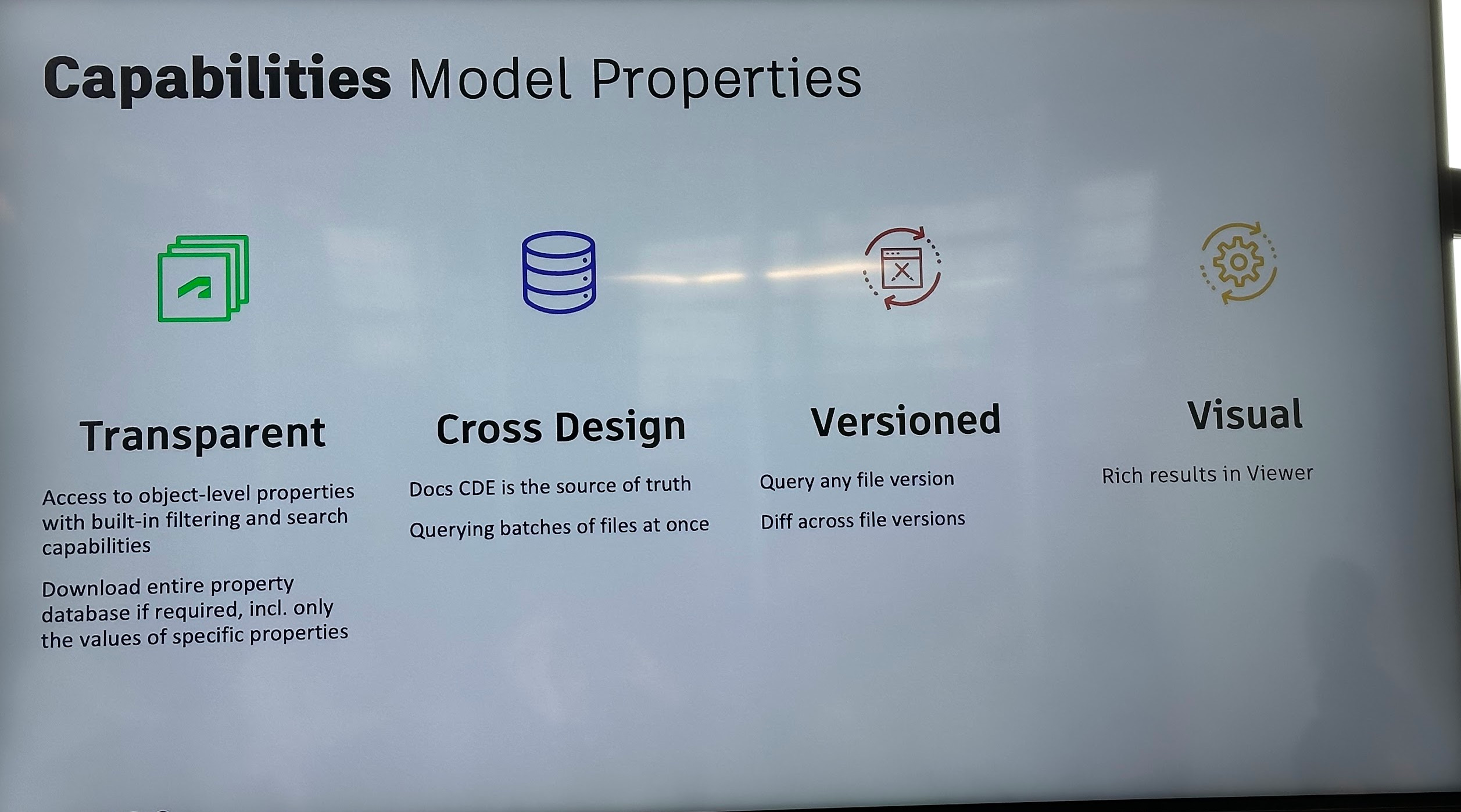
Overall, you can see the power of the data models and data API approach. You can check more specific details using these links – Autodesk Manufacturing Data Model and Autodesk AEC Data Model.
Autodesk Platform Strategy and PLM
Here are some of my thoughts about Autodesk Platform Strategy and how it can impact and help development of PLM software by Autodesk and partners.
As you can see from the picture below, the strategy is to use Autodesk Platform Services (APS) to support customers’ critical processes. For Product Design and Manufacturing specifically, the examples of Bill of Materials (BOMs), Manage Product Lifecycle and industrialized construction processes.
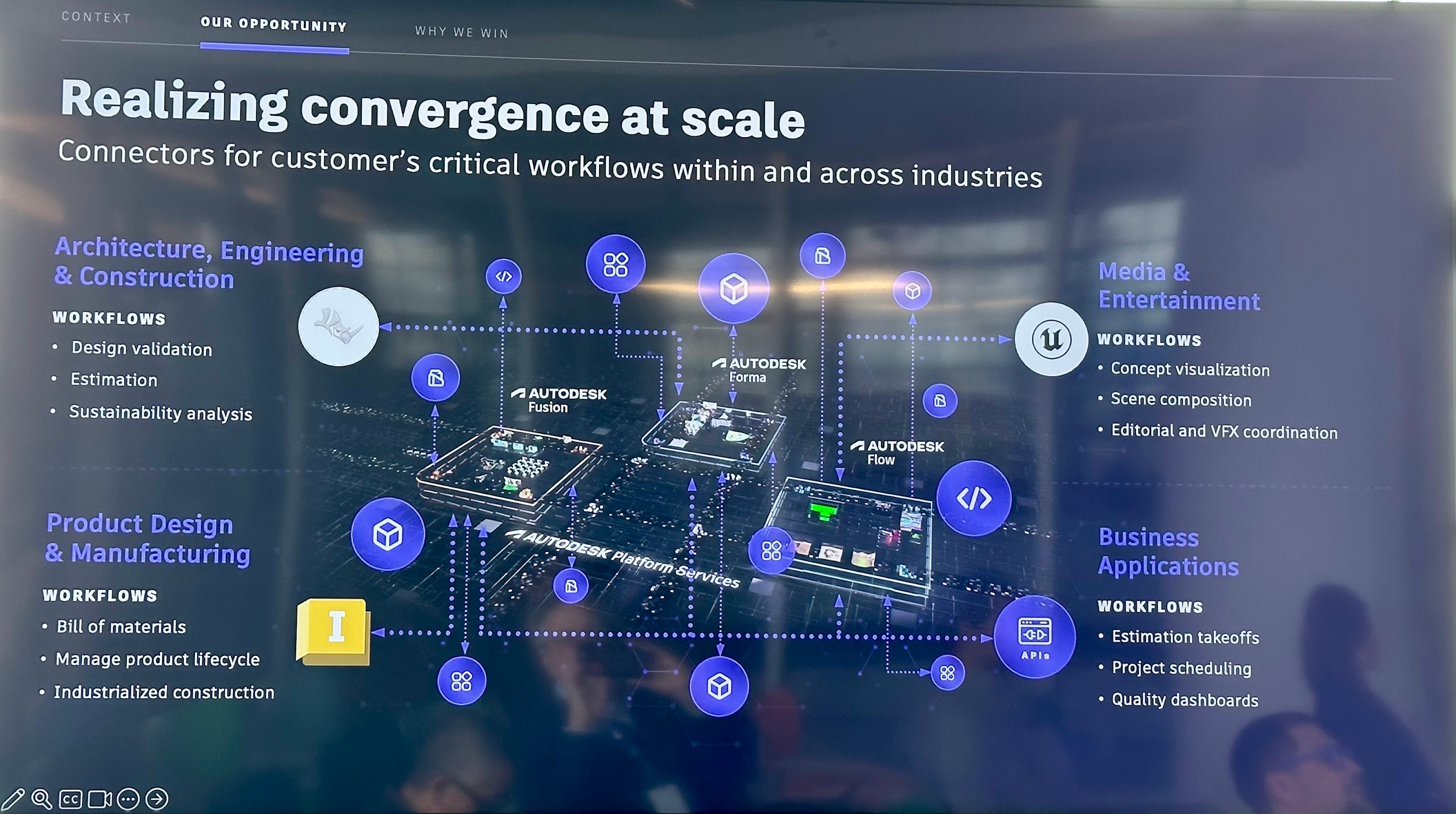
How you can build a bridge from here to manufacturing digital transformation, building digital thread, managing supply chains, connecting to diverse set of engineering data and service products?
I have no doubt that Autodesk Platform Service (APS) provides a strong data management foundation that can be used to solve different engineering data management problems (mostly around CAD and engineering data). But what about beyond engineering data and processes. What specific applications Autodesk can offer to manufacturing companies today and tomorrow.
Autodesk PLM is represented by multiple PLM product lines acquired in different period of time. My article Why Did Autodesk acquired yet another cloud PLM vendor can give you some historical perspective and ideas. The most recent news is combining both Autodesk Fusion360 Manage and Autodesk Upchain under a single brand name – Autodesk Fusion Manage. The product is a combination of two products together, each has its own database, user experience and function. Besides that Autodesk has Autodesk Vault, which is on premise software. The goal of buying Upchain was to solve the problem of “cloud PDM” and absence of CAD integrations with Fusion Manage (PLM 360, fka Datastay) product.
Here is my take on what Autodesk can do with Autodesk Platform Services and all existing PLM products – (1) Integrate existing products to get data directly from Autodesk Platform Services (APS) and (2) rebuild products using APS alone. It is an interesting choice and we need to watch Autodesk doing so. While integration of existing products can be only a temporarily solution, in my view, the biggest challenge for Autodesk will be to catch up on time and to offer a PLM products to customers. Meantime, customers are looking at PLM alternatives in the market – Dassault 3DEXPERIENCE, Siemens’ Teamcenter, PTC Arena and Windchill, Propel, OpenBOM, Duro PLM and others.
What is my conclusion?
Autodesk offers one of the most mature and horizontally spread cloud platform for engineering data. Focusing on a wide range of CAD applications and data sources, Autodesk Platform Services (APS) is the strong data foundation for the future of Autodesk products. I like the way Autodesk data and granularity principles. On PLM side, Autodesk has a bag of software that needs to be transformed into a future PLM software. Re-using existing modules, buying more or developing by themselves those are traditional options. It is not a simple question, but choosing the right one can open Autodesk a door in the future PLM SaaS. Just my thoughts…
Best, Oleg
Disclaimer: I’m co-founder and CEO of OpenBOM developing a digital-thread platform with cloud-native PDM & PLM capabilities to manage product data lifecycle and connect manufacturers, construction companies, and their supply chain networks. My opinion can be unintentionally biased.











